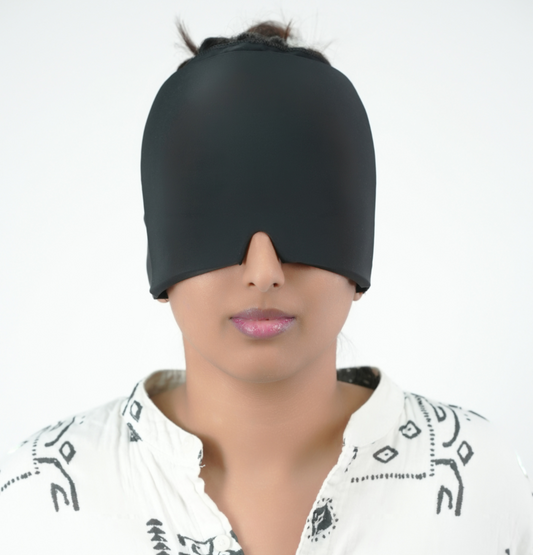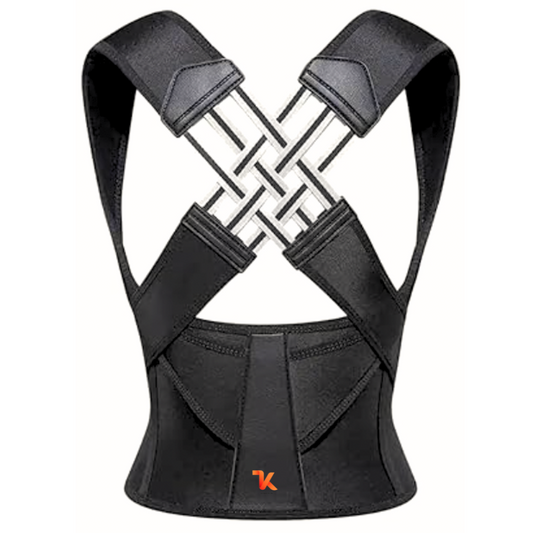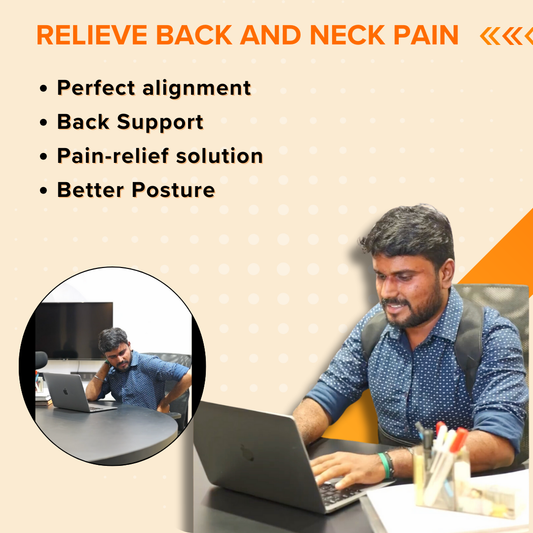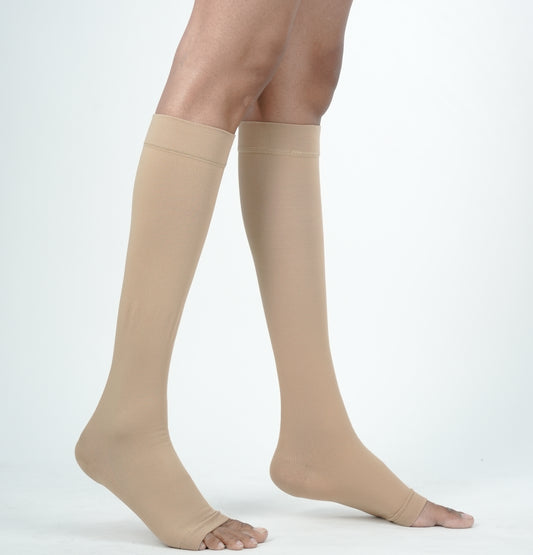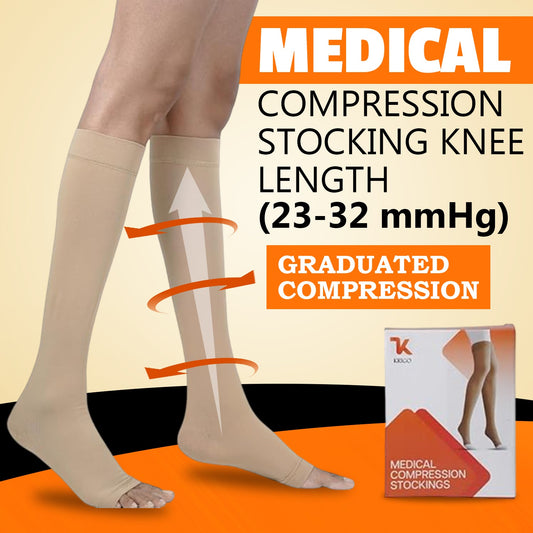How to Prevent Varicose Veins
Are you experiencing visible bulging veins or aching in your legs? You may be suffering from varicose veins.
This article will explore what varicose veins are, their causes, symptoms, and most importantly, how to prevent them.
We will also provide information on where you can purchase high-quality varicose vein stockings to help manage the symptoms of varicose veins.
Stay tuned to learn more about maintaining healthy legs and preventing varicose veins.
Key Takeaways:
- Regular exercise and maintaining a healthy weight can help prevent varicose veins.
- Avoiding prolonged periods of standing or sitting can also help prevent the condition.
- Wearing compression stockings, such as those sold by Krishnasurgicals.in, can provide relief and help prevent varicose veins.
What Are Varicose Veins?
Varicose veins are twisted, enlarged veins that usually occur in the legs. They are a result of weakened or damaged valves in the veins that can't push blood back to the heart efficiently.
This condition develops when the one-way valves in the veins become weak, leading to blood pooling in the veins. Over time, the increased pressure causes the veins to swell and twist. While varicose veins are commonly found in the legs, they can also appear in other parts of the body. The impact of varicose veins on circulatory health can include symptoms like pain, swelling, and a heavy feeling in the legs. It's essential to address this condition early to prevent complications and improve overall vein health.
What Are The Causes Of Varicose Veins?
Varicose veins can be caused by a variety of factors, including age, pregnancy, genetics, obesity, and prolonged periods of standing or sitting. According to the Cleveland Clinic, these conditions can lead to the development of varicose veins.
Age is a significant factor in the development of varicose veins, as the veins tend to lose elasticity and weaken over time. Genetics also play a vital role, with a family history of varicose veins increasing one's susceptibility to the condition.
Lifestyle choices, such as a lack of physical activity or excessive weight, can further exacerbate the risk of developing varicose veins. Pregnant women are also more prone to this vascular issue due to the increased pressure on the veins in the lower body caused by the growing uterus.
Age
Age is a significant risk factor for varicose veins, as the valves in the veins may weaken over time, leading to blood pooling and vein enlargement.
As individuals age, the elasticity of their blood vessels decreases, making it harder for the veins to efficiently pump blood back to the heart. This increased pressure within the veins can cause them to become enlarged and twisted, resulting in the development of varicose veins.
Pregnancy
Pregnancy can increase the risk of varicose veins due to hormonal changes and increased blood volume, which can put additional pressure on the veins. Women undergoing hormonal replacement therapy may also be at a higher risk of developing varicose veins during pregnancy
During pregnancy, the body's hormonal fluctuations, particularly an increase in progesterone, can weaken the walls of the veins, making them more prone to becoming varicose. As the uterus expands to accommodate the growing baby, it exerts pressure on the major veins in the pelvis, hindering the normal flow of blood back to the heart. This disruption in blood flow can lead to the pooling of blood in the leg veins, causing them to swell and become visible as varicose veins.
Genetics
Genetics play a crucial role in predisposing individuals to varicose veins, as a family history of venous insufficiency increases the likelihood of developing the condition. Understanding genetic risks can help in proactive prevention and management strategies.
When one has a family history of varicose veins, it significantly raises the chances of inheriting the condition due to shared genes among relatives. This genetic predisposition means that certain individuals may have a higher susceptibility to venous issues even before symptoms emerge. It is essential for those with a genetic risk to be aware of lifestyle factors that can exacerbate vein problems, such as prolonged sitting or standing, obesity, and lack of exercise.
Even though genetics play a significant role, individuals can take proactive steps to reduce the impact. Maintaining a healthy weight, staying physically active, and elevating the legs when possible can all contribute to better vein health. Regular monitoring by a healthcare provider can detect early signs of venous insufficiency and facilitate timely interventions.
Obesity
Obesity is a significant risk factor for varicose veins, as excess weight can increase pressure on the veins and impede proper circulation. Maintaining a healthy weight through lifestyle changes and dietary modifications is essential for preventing varicose veins.
Regular physical activity, such as walking or swimming, not only helps in managing weight but also promotes better blood flow, reducing the risk of varicose veins. Including fiber-rich foods in the diet can aid in weight control and improve overall vascular health. Avoiding prolonged sitting or standing positions can also prevent unnecessary strain on the veins and reduce the likelihood of developing varicose veins. By making these simple yet effective changes, individuals can significantly lower their chances of obesity-related vascular issues.
Standing or Sitting for Long Periods
Prolonged periods of standing or sitting can contribute to the development of varicose veins by increasing pressure on the leg veins and hindering proper blood flow. Avoiding sedentary behavior and incorporating movement breaks are crucial for reducing the risk of vein issues.
Living a sedentary lifestyle not only impacts your vein health but also has broader implications for your overall well-being. When you sit or stand for extended periods, the muscles in the legs have to work harder to pump blood back to the heart, leading to potential vein problems over time.
What Are The Symptoms Of Varicose Veins?
Symptoms of varicose veins can include visible bulging veins, aching or heaviness in the legs, swelling in the legs and ankles, and cramping or restless legs. A physical examination by a healthcare provider can help diagnose varicose veins.
Varicose veins are often more than just a cosmetic concern as they can lead to complications if left untreated. The presence of these symptoms can significantly impact daily life, causing discomfort and affecting mobility. Individuals with varicose veins may also experience skin changes over affected veins, such as discoloration or ulcers.
During a physical examination, a healthcare professional may assess the affected areas, inquire about symptoms, and potentially recommend further tests like duplex ultrasound to evaluate blood flow in the veins. Early detection and treatment can help alleviate symptoms and prevent potential complications in the future.
Visible Bulging Veins
Visible bulging veins, often referred to as spider veins, can be a prominent sign of varicose veins in the legs. Consulting a healthcare provider for proper evaluation and treatment recommendations is crucial for managing vein issues.
Spider veins, which are smaller blood vessels that appear close to the skin surface, can also indicate underlying varicose vein problems. These web-like formations are different from the thicker, bulging varicose veins but are still important indicators of venous insufficiency. Seeking medical advice promptly is essential as untreated varicose veins can lead to serious complications such as ulceration and blood clots. Healthcare providers play a crucial role in assessing the severity of vein issues, recommending appropriate interventions, and providing ongoing care to improve vein health.
Aching or Heaviness in Legs
Aching or heaviness in the legs can be symptomatic of varicose veins, indicating potential circulatory issues and vein insufficiency. Recognizing these symptoms early can lead to timely interventions and improved quality of life.
These sensations often arise due to the pooling of blood in the veins, causing pressure and discomfort. Individuals experiencing these symptoms may notice visible, bulging veins that are twisted in appearance. The effect on daily activities can be significant, with some finding it challenging to stand for prolonged periods or engage in regular exercise routines. Leg discomfort from varicose veins may also disrupt sleep patterns, leading to fatigue and reduced productivity during the day. Proper diagnosis and treatment are crucial to managing these symptoms and preventing complications.
Swelling in Legs and Ankles
Swelling in the legs and ankles is a common manifestation of varicose veins, often related to fluid retention and compromised venous circulation. Monitoring and addressing swelling early can prevent further complications.
When venous valves weaken or become damaged, it can lead to backflow of blood, causing pooling in the veins and subsequent swelling. This swelling, known as edema, can be uncomfortable and unsightly, impacting daily activities.
Timely intervention is crucial to manage related symptoms effectively, such as elevation of the legs, regular exercise to improve circulation, and compression stockings to support venous return.
Cramping or Restless Legs
Cramping or experiencing restless legs can be indicative of varicose veins, signaling potential vascular issues that may require a thorough physical examination for accurate diagnosis and treatment planning.
These uncomfortable sensations, often described as aching, throbbing, or heaviness in the lower extremities, are common symptoms associated with varicose veins.
When left untreated, these symptoms can worsen, affecting not only the quality of sleep but also hindering daily mobility and activities.
Seeking medical evaluation is crucial as it helps determine the underlying cause of the discomfort and enables healthcare providers to recommend appropriate treatment options.
How Can Varicose Veins Be Prevented?
Preventing varicose veins involves maintaining a healthy lifestyle, regular exercise, weight management, avoiding prolonged standing or sitting, elevating legs, and wearing compression stockings. These proactive measures can reduce the risk of developing varicose veins.
Engaging in regular physical activities such as walking, biking, or swimming can improve blood circulation and help strengthen the walls of the veins, thus decreasing the likelihood of varicose veins. Practicing weight control through a balanced diet and maintaining a healthy Body Mass Index (BMI) can alleviate excess pressure on the veins.
Remember to take breaks during long periods of sitting and standing to prevent vein strain, and make it a habit to elevate your legs above heart level when resting to promote proper blood flow.
Regular Exercise
Regular exercise, including activities like yoga, cycling, and swimming, can promote healthy circulation, strengthen leg muscles, and reduce the risk of varicose veins. Incorporating physical activity into daily routines is crucial for vein health.
Yoga, with its emphasis on gentle stretching and strengthening, can be particularly beneficial for improving blood flow in the legs and preventing the formation of varicose veins. The various poses in yoga help to engage and tone the muscles in the legs, enhancing venous return and reducing the likelihood of blood pooling in the veins.
Swimming, on the other hand, offers a low-impact cardiovascular workout that boosts circulation without putting excessive strain on the joints. The resistance provided by the water helps in toning the leg muscles and improving overall blood flow, thereby supporting vein health.
Maintaining a Healthy Weight
Maintaining a healthy weight is essential for reducing the strain on veins and preventing varicose veins. Managing weight through dietary choices, reducing salt intake, and adopting a balanced diet can support overall vein health.
Excess weight can lead to increased pressure on the veins, contributing to the development of varicose veins. By focusing on weight management, individuals can potentially alleviate the discomfort and appearance of varicose veins.
Avoiding Prolonged Standing or Sitting
Avoiding prolonged periods of standing or sitting can help maintain healthy blood flow and reduce the risk of varicose veins. Incorporating movement breaks and adopting ergonomic practices are effective strategies for venous health.
Prolonged inactivity can lead to blood pooling in the legs, potentially causing vein issues. It is essential to find a balance between sitting, standing, and movement throughout the day.
Wearing Compression Stockings
Wearing compression stockings can help support vein function, improve circulation, and alleviate discomfort associated with varicose veins. Healthcare providers may recommend specific types of compression stockings based on individual needs.
It is essential to select the right compression level and variant of stockings that will best suit the condition.
The correct fit is crucial for effectiveness, so measurements should be taken accurately. When wearing compression garments, ensure they are put on in the morning, avoid folding or rolling them, and don't wear them to bed unless specifically advised.
It is also important to regularly wash and air-dry the stockings to maintain their elasticity and prevent skin irritation.
Where Can You Buy Varicose Vein Stockings?
You can purchase varicose vein stockings from online retailer like Krishnasurgicals.in . These compression stockings are designed to improve circulation and provide support for individuals with vein issues.
Compression stockings have become increasingly popular for managing varicose veins and other circulation-related problems. The benefits of wearing these specialized garments include reducing swelling, preventing blood clots, and alleviating symptoms such as aching and heaviness in the legs.
When considering where to buy compression stockings, it's important to look for reputable sellers like Krishnasurgicals.in that offer a variety of sizes and styles to ensure a proper fit. Online purchasing options provide convenience and a wider selection, allowing individuals to find the perfect compression garment to suit their needs.
Krishnasurgicals.in
Krishnasurgicals.in offers a wide range of compression stockings designed to address varicose veins and promote healthy circulation. Customers can explore different variants and sizes online for convenient purchase and delivery.
Compression stockings are essential for managing varicose veins by applying gentle pressure to the legs, helping improve blood flow and reduce swelling. The products available at Krishnasurgicals.in are made from high-quality materials that provide comfort and durability.
Online shoppers can benefit from the user-friendly website interface of Krishnasurgicals.in, making it easy to browse through the extensive collection of medical supplies. Varicose vein sufferers can find suitable products tailored to their needs, ensuring effective relief and support.


